Plenty of fight in Transat Jacques Vabre
Published on November 14th, 2017
(November 14, 2017; Day 10) – As with Sodebo Ultim’s victory yesterday in the 13th edition of the Transat Jacques Vabre, the Anglo-Spanish duo of Phil Sharp and Pablo Santurde on Imerys Clean Energy are also showing in the Class40 that you do not need the biggest budget or the latest boat to be the leader.
With 60 percent of the race complete, Sharp and Santurde, despite their communication problems and disrupted weather files, do not seem to be giving anything away to the theoretically faster latest generation French boats alongside them.
If the finish for the two Ultime in Salvador de Bahia yesterday was one of the closest in the history of the race – 1 hour 47 minutes and 57 seconds – the other three fleets battling it out in the Atlantic could deliver even more nail-biting.
The Multi50 has seen a stunning reversal at the front in the last 48 hours, the Imoca leader may yet suffer in Doldrums too and the podium battle is intensifying behind them. But nothing tops the Class40.
Latest ETAs
• Ultime: Prince de Bretagne – Wedneday, November 15 night UTC
• Multi50: Leaders, Thursday, November 16, 5 or 6 hours after Prince de Bretagne
Class40: Neck-and-neck
It was close yesterday, but this afternoon there was just 3.8 miles between the front three at 15:00 UTC. Sharp and Santurde (Imerys Clean Energy) took the lead back last night (Monday) from V and B, with Aïna Enfance et Avenir edging into second.
There is just 22 miles of lateral separation between them, with Imerys Clean Energy on the west and V and B on the east. Aïna Enfance et Avenir look like they’re just 4 miles east of Imerys Clean Energy.
Maxime Sorel skippered this 2015-launched V and B to second place in the race in 2015, finishing just under two hours behind. Aïna Enfance et Avenir is a latest generation 2017 boat. Imerys Clean Energy was new in 2013 when it won this race as GDF Suez, but fell into disrepair and Sharp has had to restore it. He will hope it can recapture all of its former glory in the next 2,000 miles.
The front three have been averaging 10 knots in steady 10-12 knot westerlies, but it was a tough night. “Last night was a difficult one as we sailed through the wind shadow of the Cape Verdes,” the experienced Catalan sailor, Santurde said. “The wind was light and shifty and it wasn’t until this morning that we were able to access some consistent wind. We are starting our approach to the doldrums, which could be a little bit longer than expected due to the lights wind ahead.”
TeamWork40 made up 20 miles in fourth in the morning, but has lost 30 during the day, probably due to the same Cape Verde effect.
They are all looking ahead to the Doldrums – which they should still enter tomorrow – conscious of the effect it has had on the classes in front of them and in the history of the race. The Class40 can get really stuck there. West is often best, and has been so far, but how much should the boats invest if it costs them miles in the approach. And before that they will have to struggle through the same soft patches in the approach that have slowed the Imoca.
Imoca: A soft approach and difficult Doldrums
St Michel-Virbac, so far, has avoided the fate of the leader of the Multi50 and countless more before them in the Doldrums. But Jean-Pierre Dick and Yann Eliès are entering another stretch of murky winds this evening and may watch SMA, 58 miles behind at 15:00 UTC, come back on them as they did this morning.
St Michel-Virbac, did not follow the last gybes by its pursuers yesterday afternoon, so they find themselves further east compared to SMA. That looked expensive overnight as the lead was halved to 28 miles. But the elastic of the Dodrums sometimes stretches both ways and it soon stretched back.
Paul Meilhat, skipper of SMA thought last night that they would be out of the Doldrums in about 30 hours, so they will be out tomorrow morning. But their westerly position looks like it might give them a better exit. We will have the answer tomorrow.
It has been a slow and complicated approach to the Doldrums from the Cape Verde islands, with the wind going soft, and that has perhaps increased the pressure for the podium too. Still third, Des Voiles et Vous! is 135 miles behind the leader but has intimidating sight in the rear view mirror – 60 miles behind.
Lined up in its wake is a phalanx of five boats, separated by only 40 miles and waiting to pounce on any a slip ahead of them. Ninety miles behind them and having the race of his life is the amateur Pierre Lacaze funding Vivo A Beira, with professional skipper Yoann Richomme. They are excelling on an older boat and have met some friends in the Atlantic.
Multi50: Was it the Doldrums?
For FenêtreA-Mix Buffet, the meteorological equator was an archetypal example of what the Doldrums can do to a race – maybe. Arkema seized the lead and was 56 miles ahead at the 15:00 UTC. Lalou Roucayrol and Alex Pella have just taken 160 miles in 42 hours off Erwan Leroux and Vincent Riou.
The strangest thing is that Arkema managed this on a very similar track. The Doldrums can be extremely localised and random, with the skillful and lucky managing to jump from squall to squall but it could be that FenêtréA-Mix Buffet suffered silently with a technical problem. The two 50ft trimarans have been in a south-east trade wind all day with 900 miles of racetrack left for the favourites, Le Roux and Riou to make a comeback.
Ultime: The lone boat
Stuck in the Doldrums yesterday afternoon, positioned well in the West, Prince de Bretagne is currently reaching at 25 knots in steady south-easterlies 100 miles ahead of Arkema. Without a generator, and having to rely on their wind turbine just to give them a little bit of autopilot, Lionel Lemonchois and Bernard Stamm are definitely not going to be able to take advantage of any weather files precise enough to help them shorten the road to Salvador de Bahia.
Thomas Rouxel (Maxi Edmond de Rothschild), paid tribute to Prince de Bretagne, which is unique in the Ultime class and has not really been helped by the conditions. Very low on the water (the central hull is that of an extended Orma trimaran), Prince de Bretagne is probably, with the Multi50, the wettest multihull to sail on in the fleet. It still has 800 miles to the finish in Salvador de Bahia.
Technical stop:
Esprit Scout (Class40) is still on a technical stop in Tenerife (Canary Islands) with delamination of their hull on the port bow. They will relaminate in the boatyard tomorrow morning and hope to leave tomorrow morning.
Race details – Entry list – Tracker – Facebook
13th edition of the Transat Jacques Vabre
• Biennial doublehanded race now 24 years old
• Two founding partners: the city of Le Havre and brand Jacques Vabre
• Four classes on the starting line: Class40, IMOCA, Multi50, and Ultimate
• Starting November 5 in Le Havre (FRA) for the 4350nm course to Salvador de Bahia (BRA)
n 2013, and again in 2015, all the boats flew past Salvador de Bahia, sails filled by the trade winds of the south-east, under the tropical sun…One imagines that they dreamt of finally finishing their race in All Saints’ Bay. In 2017, it will be a reality!
After the start line and a coastal route as far as Etretat, the duos will head towards Brittany to get out of the Channel as quickly as possible, where the currents are powerful, cargo traffic dangerous, and a lot of attention is needed.
They will then enter the Bay of Biscay, where, depending on the position of the Azores anticyclone, they will either find downwind conditions, easy and fast, like for the last Vendée Globe, or tougher and slower conditions in the passage of some late autumn depressions.
Four hundred miles later, having passed Cape Finisterre, the northern Portuguese trade winds should propel them quickly towards Madeira, and then the Canary Islands, where awaiting them will be northeast trade winds, which could be strong or weak.
Passing close to the Portuguese coast, or offshore, to the east or west of the Canary Islands and then the Cape Verde islands – you have to choose the right options. The next goal is to establish your position for the crossing of the dreaded Doldrums, located a few degrees north of the equator. At this time of year, it can change position very quickly, extend or contract, because even after carefully studying of the satellite images, sudden squalls can develop and stall the competitors under a good shower without wind for hours.
This passage is crucial in the Transat Jacques Vabre racecourse. Further west… Further east… After the calms, rainy squalls, with too much or no wind… The final goal is to get out well-positioned enough to benefit first from the southeast trade winds and to cover the remaining 850 miles towards the finish,passing along the islands of Fernando de Noronha, along the coast of Brazil and finally heading northwest into the magnificent All Saints’ Bay.
This transoceanic racecourse from North to South is more demanding than a transat from East to West; it requires the skippers to have sharp tactical and strategic qualities, good weather training, to be in excellent physical condition to maintain a sustained speed in the trade winds… And to have a lot of patience to cross the equator.
Source: Transat Jacques Vabre


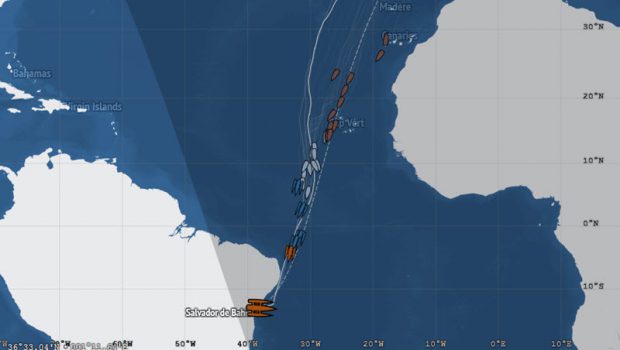

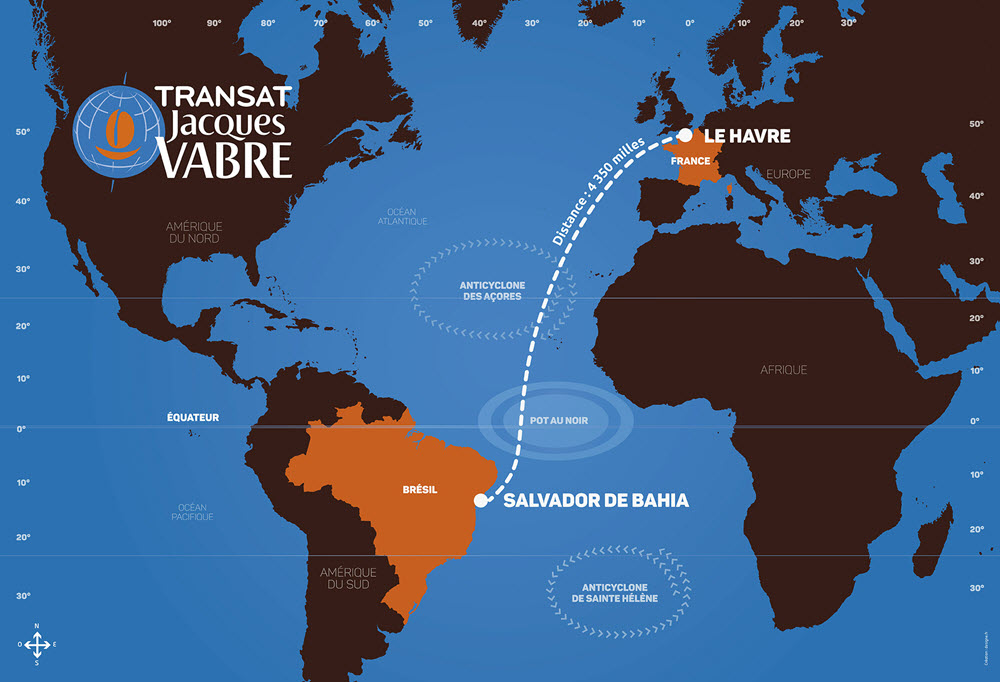

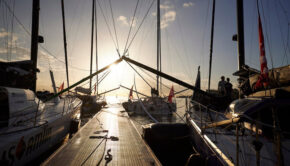
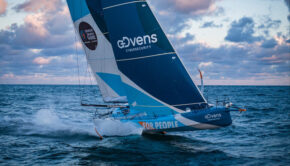
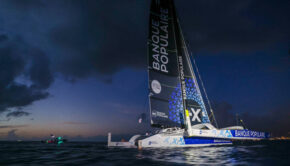
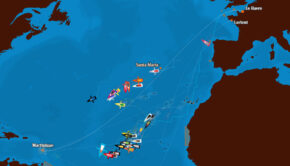
 We’ll keep your information safe.
We’ll keep your information safe.